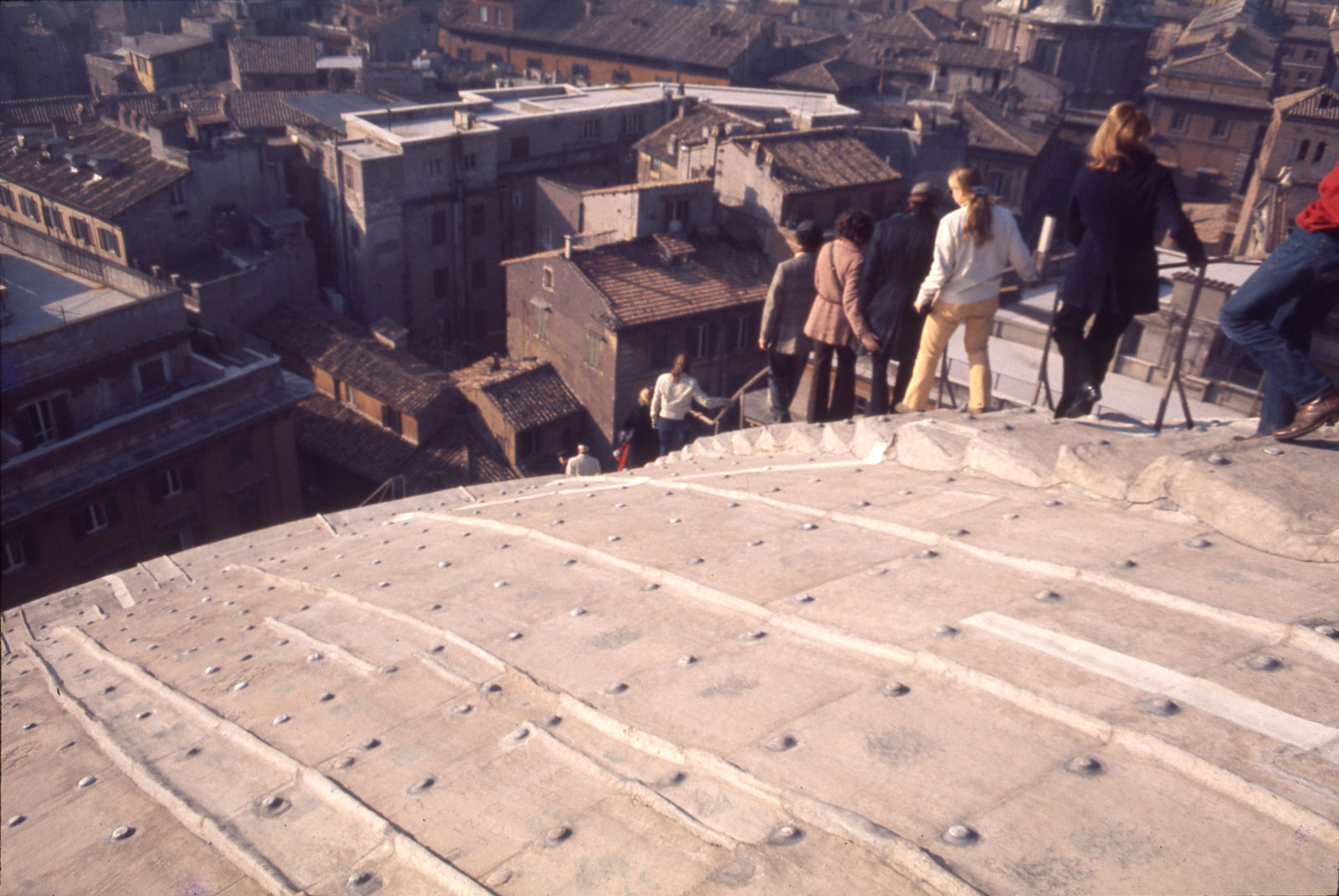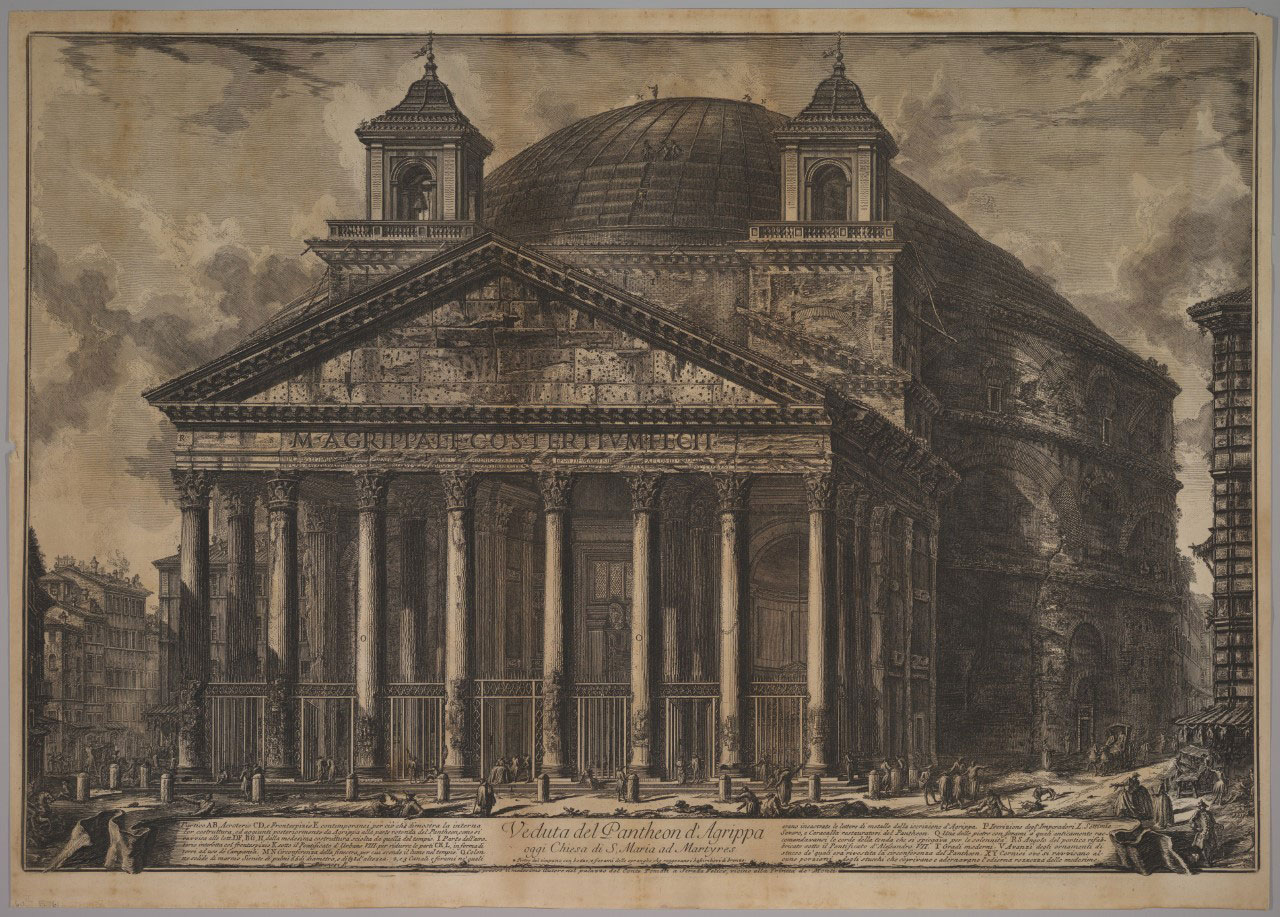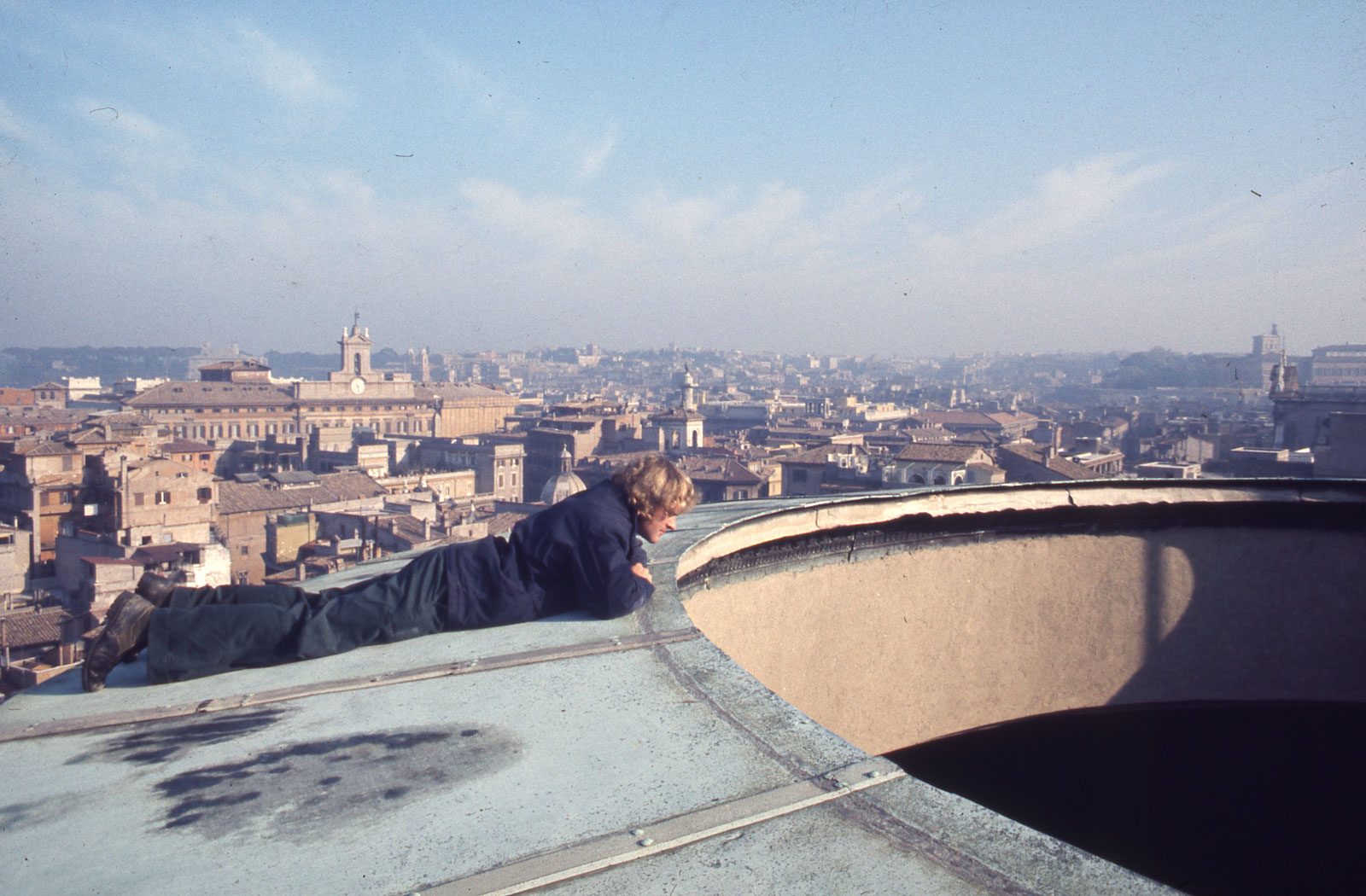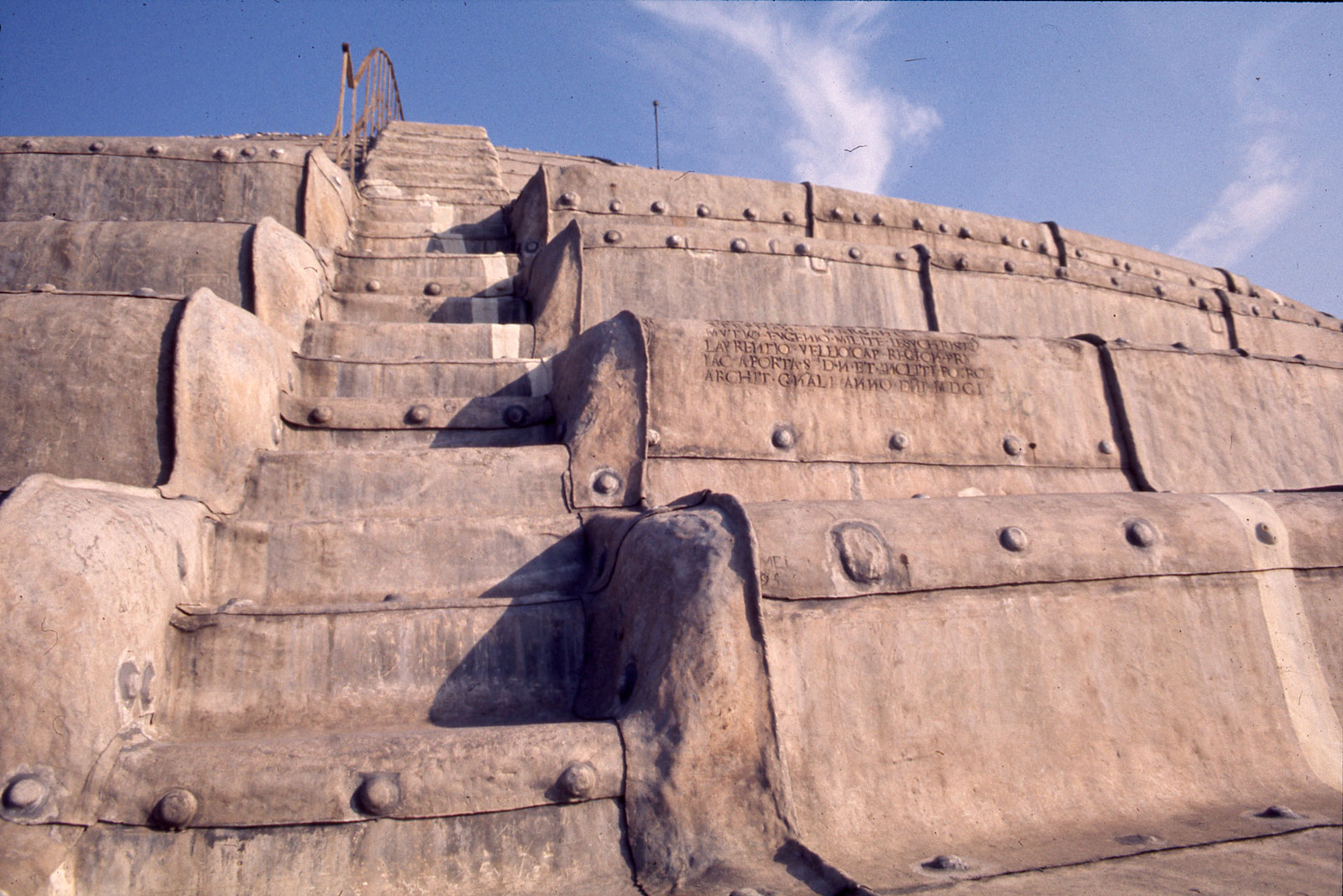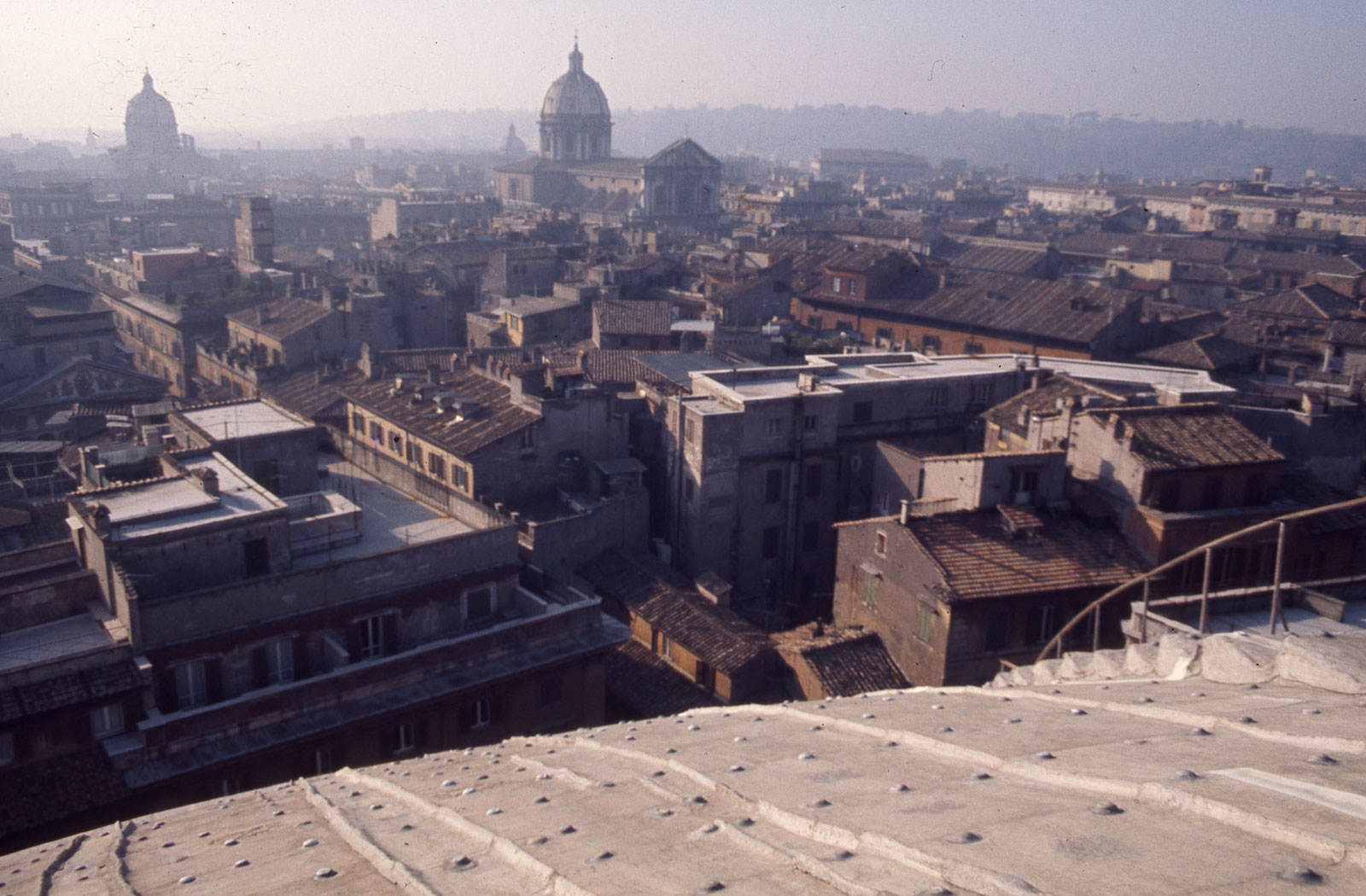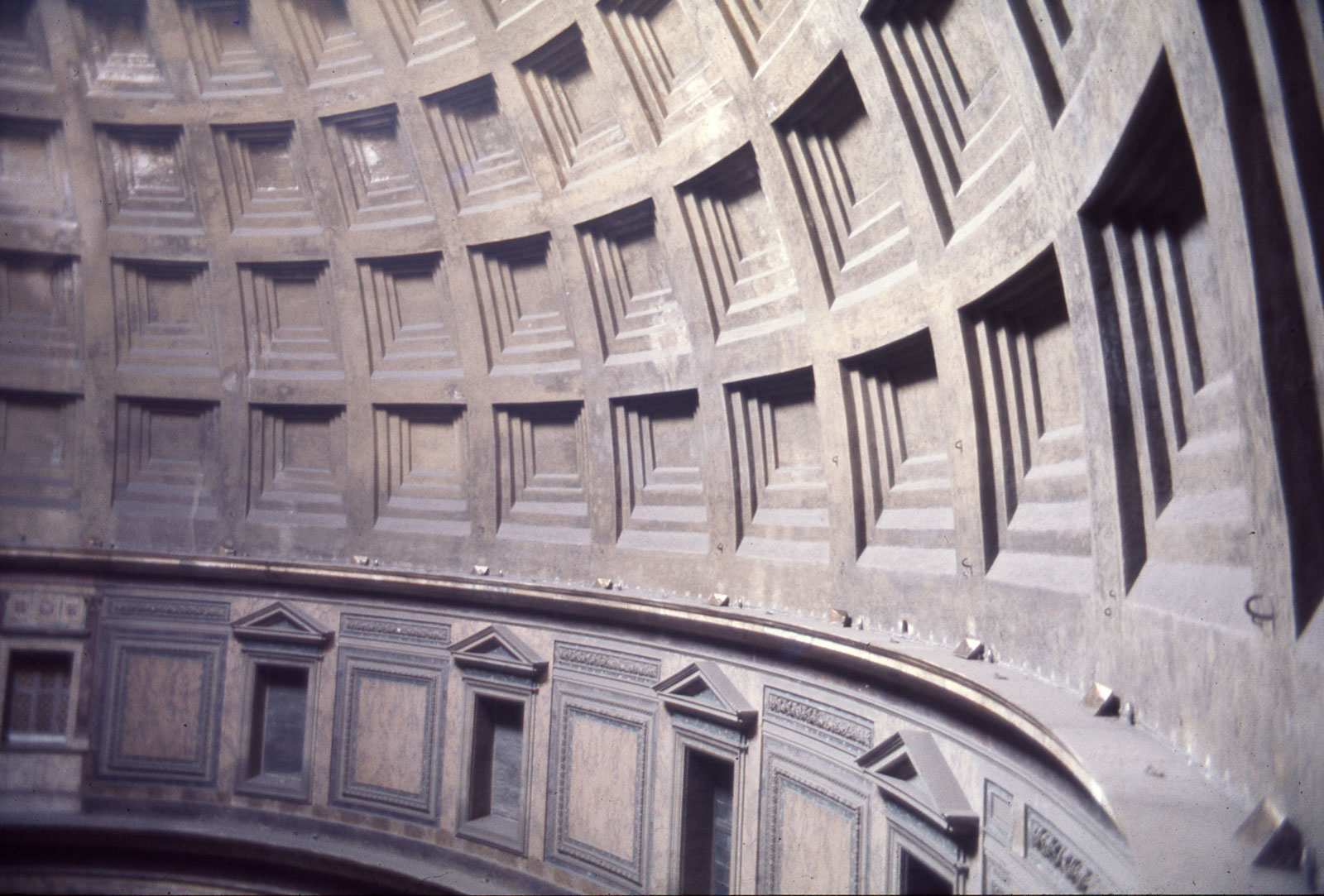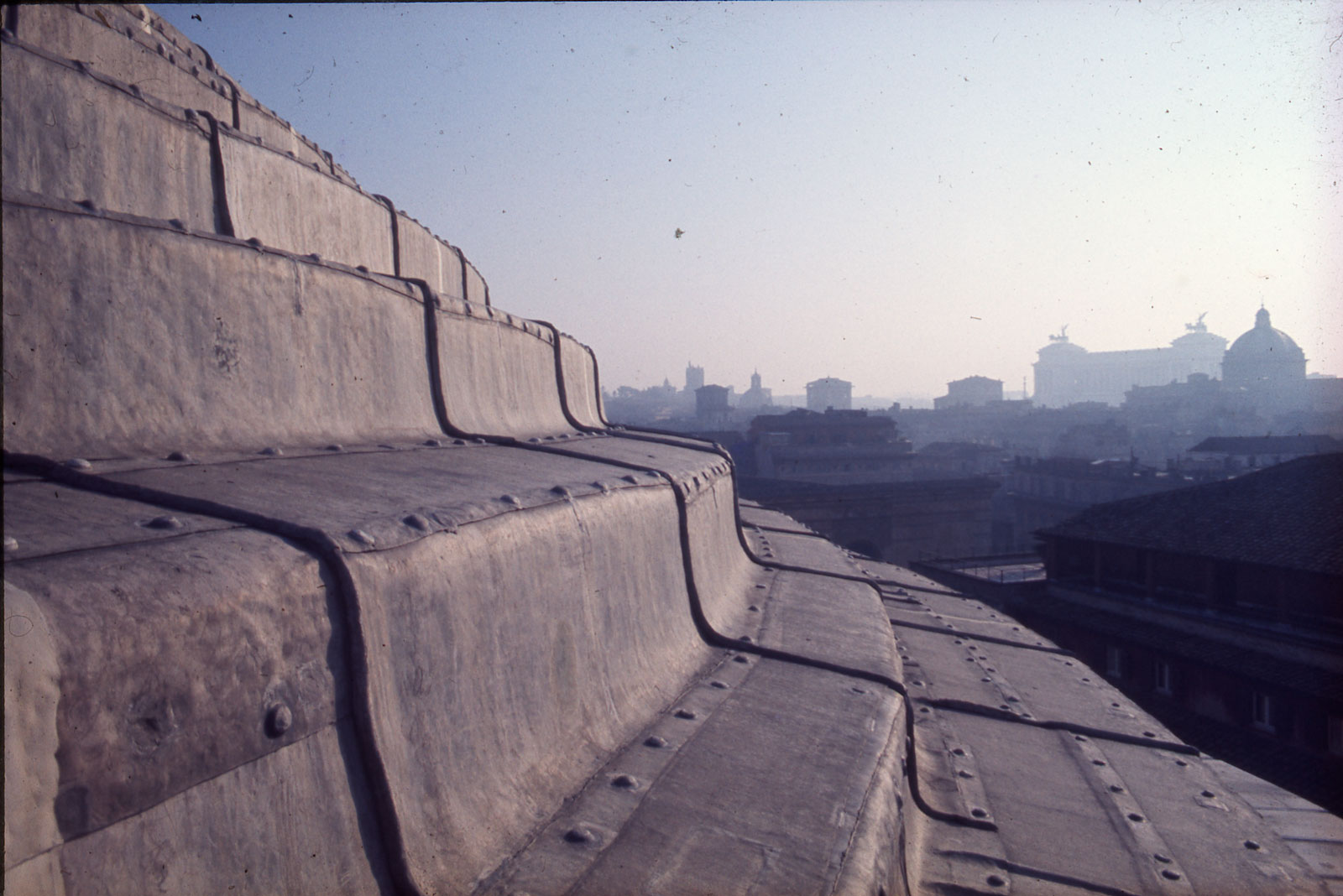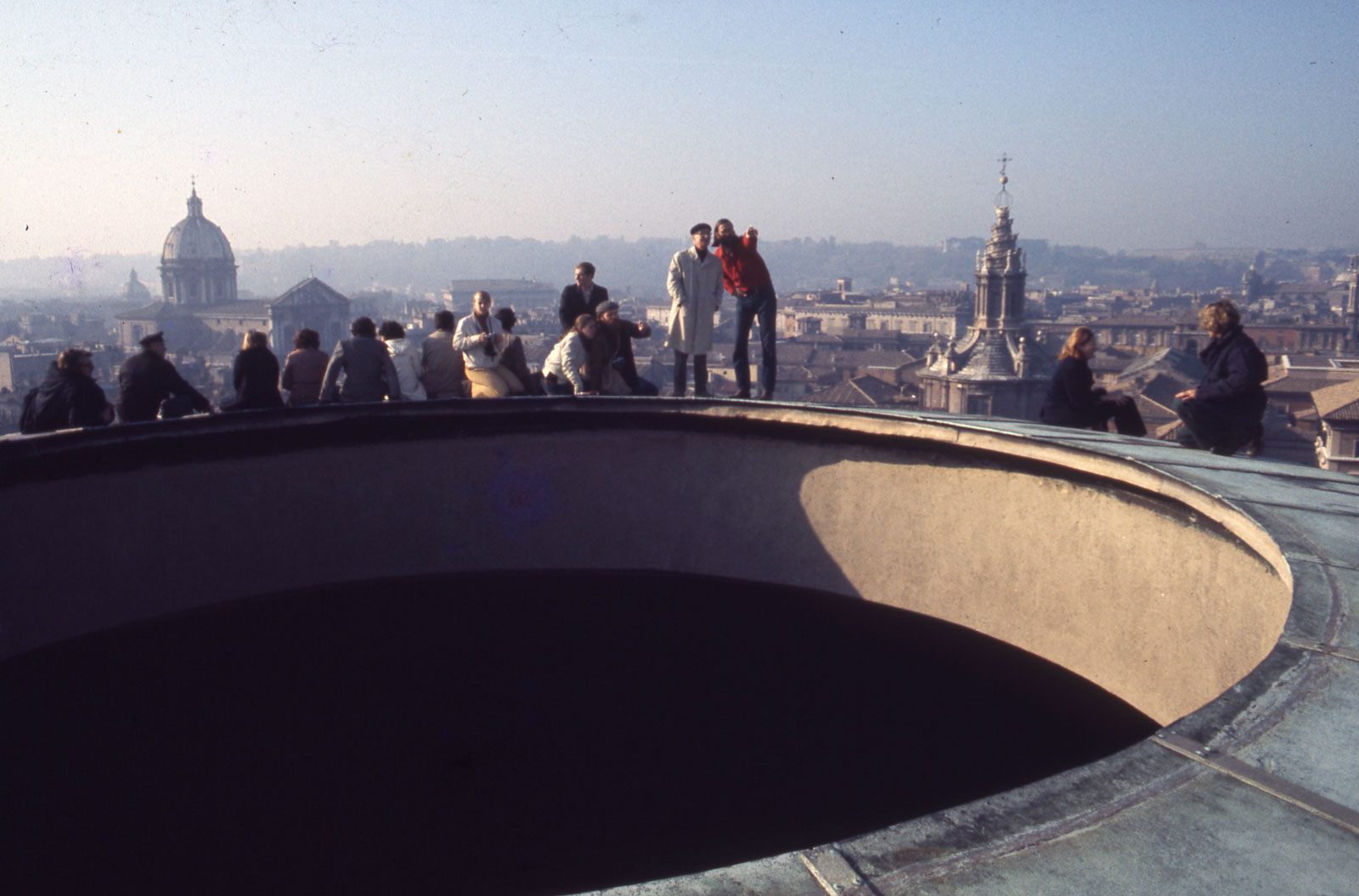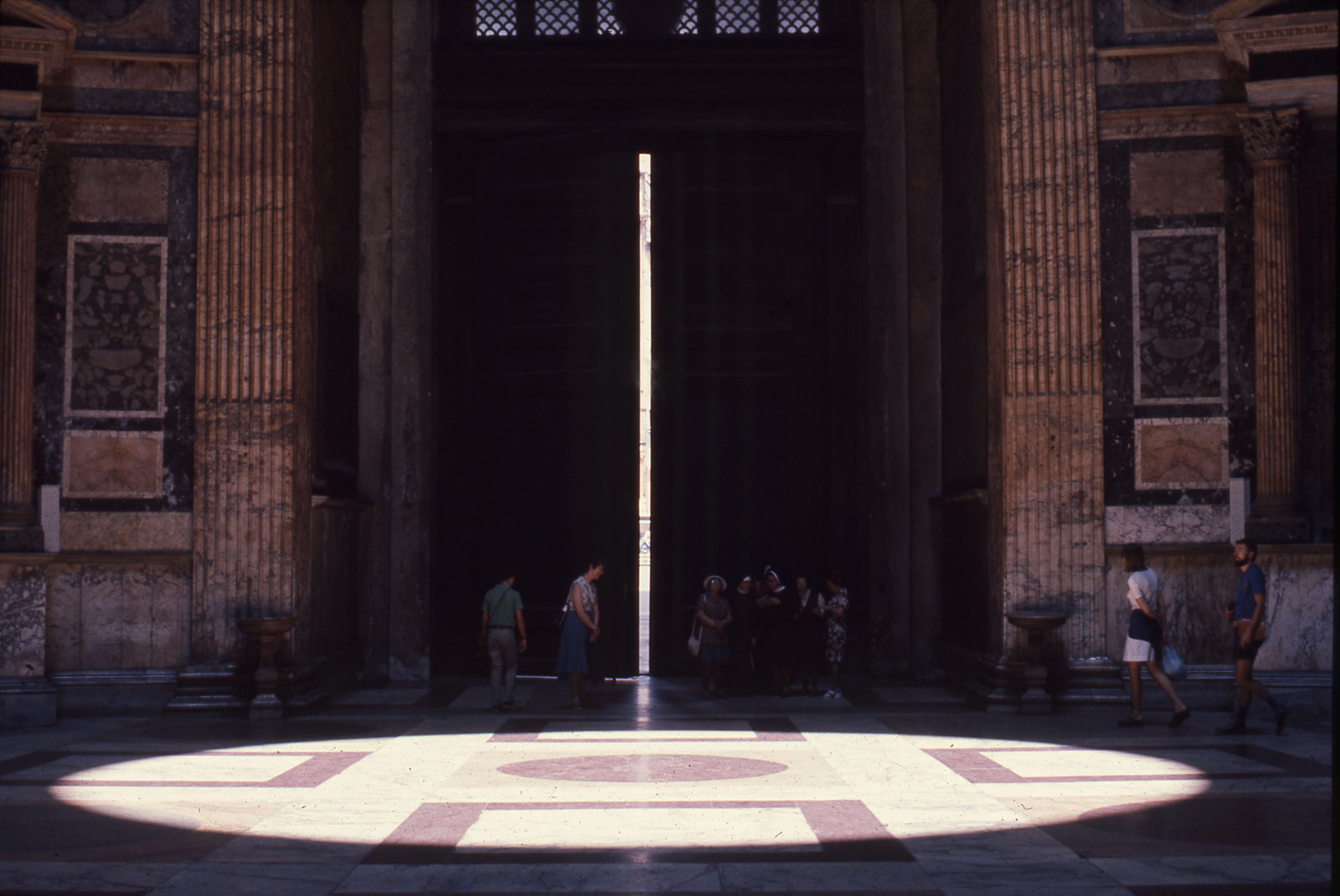Stendhal is said to have treated the Pantheon as a kind of aesthetic litmus test, judging its visitors by their level of ravishment when exposed to its radiance and scale. One wonders what kind of euphoria Stendhal would expect from someone fortunate enough to climb the outside of the Pantheon’s dome and gaze through the roof’s circular opening. As improbable as it may seem, such expeditions were once quite common. A nineteenth-century Baedeker’s guidebook, after recommending a visit by moonlight, nonchalantly advises that “for the ascent of the dome a special permesso must be obtained.” In an engraving by Piranesi—one that reveals the building in a beleaguered state, freckled with tufts of vegetative growth and flanked by scabrous columns missing large chunks of marble—you can make out tiny figures clambering across the roof. There’s a trio resting at a mid-way spot, and at least one scarf-fluttering speck stands against a grey-scale sky like some ant-sized Byronic hero.
Although it may come as no surprise that the Pantheon’s roof is off-limits in our highly litigious times, groups of scholars and artists from the American Academy in Rome climbed the dome on a regular basis as recently as the 1970s. One visitor described the short walk as a straining and vertiginous affair, “a bit like rock climbing up a slope on a hike in the Appalachians.” He also told me that once those exterior stairs end, a climber feels utterly precarious. Differences in temperature between the building’s cool interior and the sun-warmed roof created downdrafts that could literally suck someone through the opening. In what might be read as a blurring of prudence, humility, and reverence, visitors needed to creep toward the roof’s opening on their stomachs in order to peer through its oculus—a full twenty-seven feet across, and known as the “eye of god”—down into the space below.
Pantheon, we say, hauled in from the Greek and meaning all of the gods. More than anything else, this etymology is how we’ve come to agree that the building once served as a place to worship all Roman deities. Yet neither its name nor function is that simple. “Pantheon” seems to have been a kind of nickname, and no one really knows what it was originally called. Some recent theories have even questioned the building’s assumed religious purpose, suggesting that it could have been used primarily as a giant sundial to commemorate the equinox.
Looking at the Pantheon from across the Piazza della Rotonda, it’s hard to miss its Latin inscription, engraved on the portico in large Roman type and attributing its design to Marcus Agrippa. For nearly two millennia, we had no reason to doubt this claim, and yet the words are a lie. Although Agrippa had established a temple on the site around 25 BCE, that building was destroyed in a fire, as was its subsequent replacement decades later. In the mid-eighteenth century, bricks were excavated from the Pantheon’s interior that definitively dated its construction between 118 and 126 AD, revealing that the Emperor Hadrian designed the building that survives today.
As sublime as the Pantheon is—with forty-foot granite columns flanking the portico, and a dome that’s more than 140 feet in diameter and height—the actual space that we step into looks quite different from how it would have appeared in ancient times. It’s believed, for instance, that the interior dome was originally painted azure and each ribbed coffer had anchored in its center an enormous bronze rosette. In 609, after ordering the building stripped of its precious metals and all remnants of the pagan gods, Pope Boniface IV, who according to legend was armed with twenty-eight cartloads of martyrs’ bones, consecrated the space as a Christian church. Even if this change resulted in violent plunder, the Christianizing of the Pantheon also most likely saved it from the neglect and ruin that other ancient Roman temples fell victim to during the Middle Ages.
And yet, as alluring as all of this history and guesswork is, when one stands inside the Pantheon, gazing up at the roof’s opening and the revealed light and sky, it’s wise at times to avoid any irritable reaching after fact and reason.
After encountering a photograph of Fellows from the American Academy in Rome casually mingling on the Pantheon’s roof, I learned that the image had been taken by the artist Frank Baker Holmes, who had twice made the coveted pilgrimage. A correspondence with Holmes led to him sharing dozens of photographs he took circa 1975 during one of his visits to the Pantheon’s roof. A selection is included below.
This essay is adapted from A Cloud of Unusual Size and Shape, published by Trinity University Press.
Advertisement


